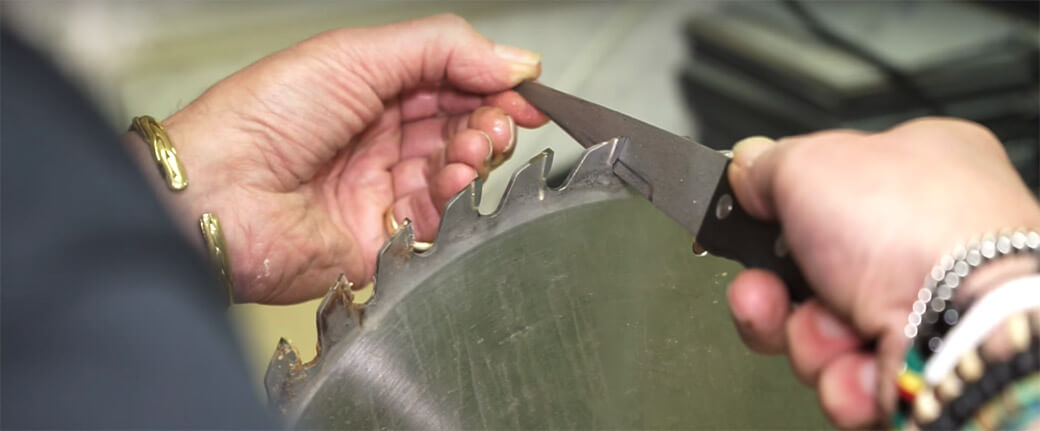A saw that uses a circular cutting blade can only be as good as the edges of the blade. Blades of any cutting edges are bound to blunt at any given point if you do not regularly take good care of them.
Blades are bound to chip when they encounter rough and tough edges when cutting and become greasy and grimy with continued use. You can either buy a new blade or maintain the top form of your saw by following the step-by-step guide.
Table of Contents
Follow the Step-by-Step Guide on How to Sharpen Circular Saw Blade by Hand
The Tools You Need
- Washable marker or a piece of chalk
- Sacrificial painter brush (use the 25mm and above)
- A firm wire brush
- Heavy-duty socket
- A strip of wood (use one that is between 300mm to 8mm thick)
- Bench vice
- Optional Tools
- Gloves
- G-Clamos
- Vaseline or any available petroleum jelly
- Rags to be used for cleaning
You may also like to read:
How to Unlock Ryobi Miter Saw.
How to Start a Stihl MS250 Chainsaw.
Step 1: Stay Healthy and Observe Safety
Make sure all the mains are disconnected before removing the circular saw blade. You also need to detach the blade from the saw before sharpening to avoid the grinding powder to settle inside the machine.
Remove the Blade
Use the thin strip to clamp on the saw bed and against the tooth to lock the blade in one position as you loosen the bolts and screws holding it in place.
Step 2: Preparations
Using the soft brush to apply petroleum jelly to the blade and let it sit for thirty minutes. This helps in the breaking down of the resin found in the saw’s teeth
Clamp the blade to the jig and clean it using a wire brush. During the brushing process, do it from inside out like you would the same way clean a compact disk.
Let the rags soak up the fine powder during the cleaning process including the teeth.
Using a Jig
A jig has to be prepared to make the cleaning process easy. What you need is 300mm baton having a small piece. Use a wingnut, washer, and a coach bolt to secure the saw blade to the baton. This will help in steadying the blade during the sharpening process. Release the wingnut by flicking it to move to the next blade.
Step 3: Sharpening
Mark the first saw tooth using a washable marker to eliminate the possibility of sharpening the teeth more than once.
Avoid pulling back and forth when sharpening because it may blunt the file, to avoid that use the gentle forward strokes. Make sure the sound that comes from filing is not squeaky. Squeakiness is a sign of incorrect usage.
Sharpen the tooth until you see polished steel. As you maintain the sharpening routine, the teeth become smaller. Therefore, it is essential to create deeper gullets with each sharpening. Failure to do that will produce misshapen teeth.
Sharpen a Crosscut Blade
This intractable is supposed to guide those with rip cutting blade. What happens to owners of saws with crosscut blades? Here is what to do:
Sharpen one tooth, then skip a tooth, sharpen the next tooth, then skip and so on… do this looking at the alignment of the saw tips. The teeth of a crosscut are so arranged to make sure that the cut is wider than the blades width.
A thin blade means the friction between the wood and the cutting blade will lead to overheating and using too much power when cutting.
Step 4: Finalizing
Clean the blade using a soft brush or rag to remove remaining residue.
Going through this process may look tedious, but it is a quick exercise once you get to know about it. All you need is a file and a vice grip.
Final Word
The same way a dull razor cannot pass through your beards, and then there is no way a blunt saw should be used to cut wood. Remember that an inferior quality blade not only your motor faster but also leads to unnecessary strain.
If there is no budget for a new blade consider sharpening by hand as you wait for cash flow. We welcome any comment or suggestion that you have on how to sharpen circular saw blade by hand. Kindly use the comment section to share your views.

